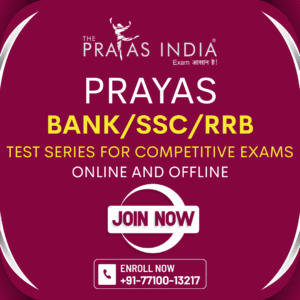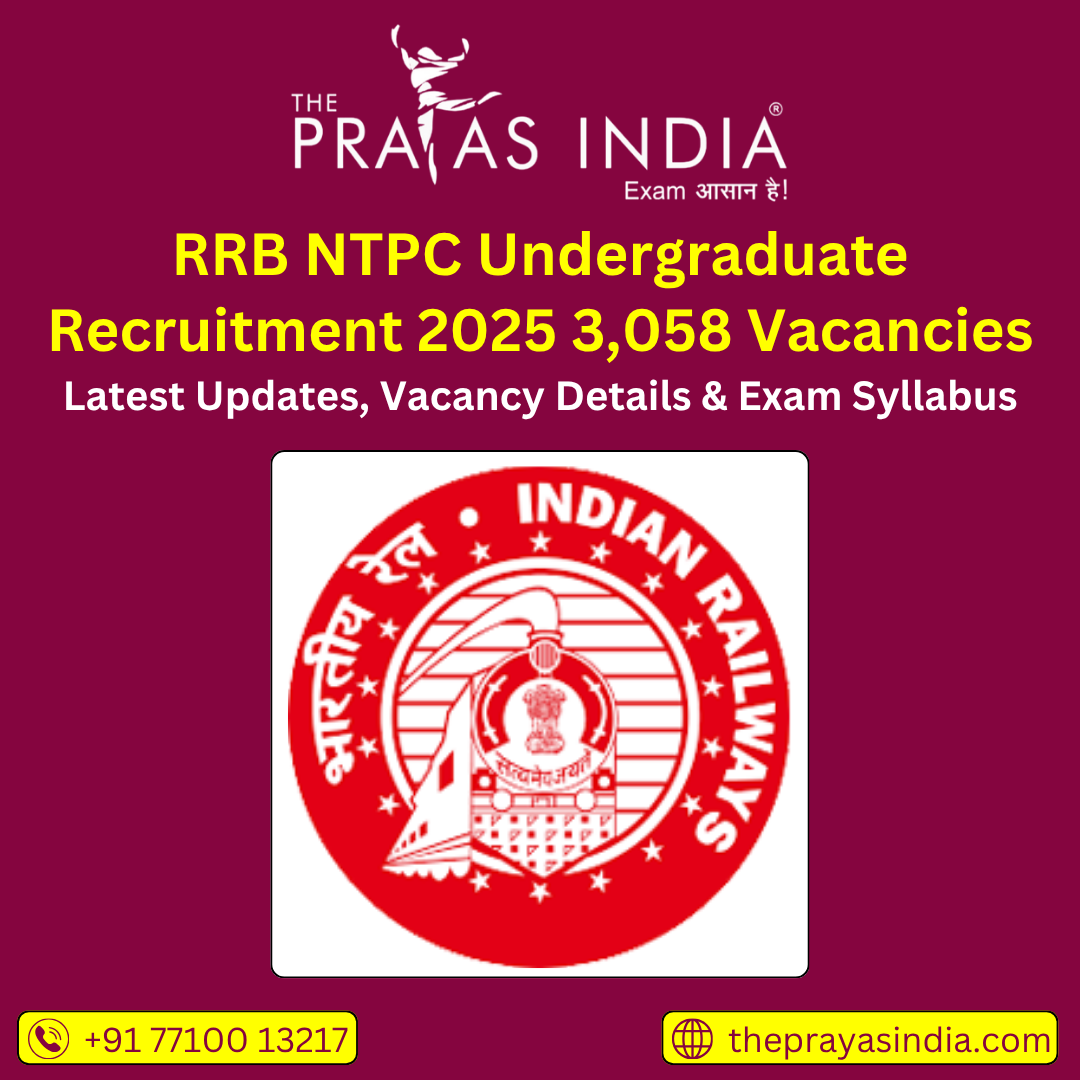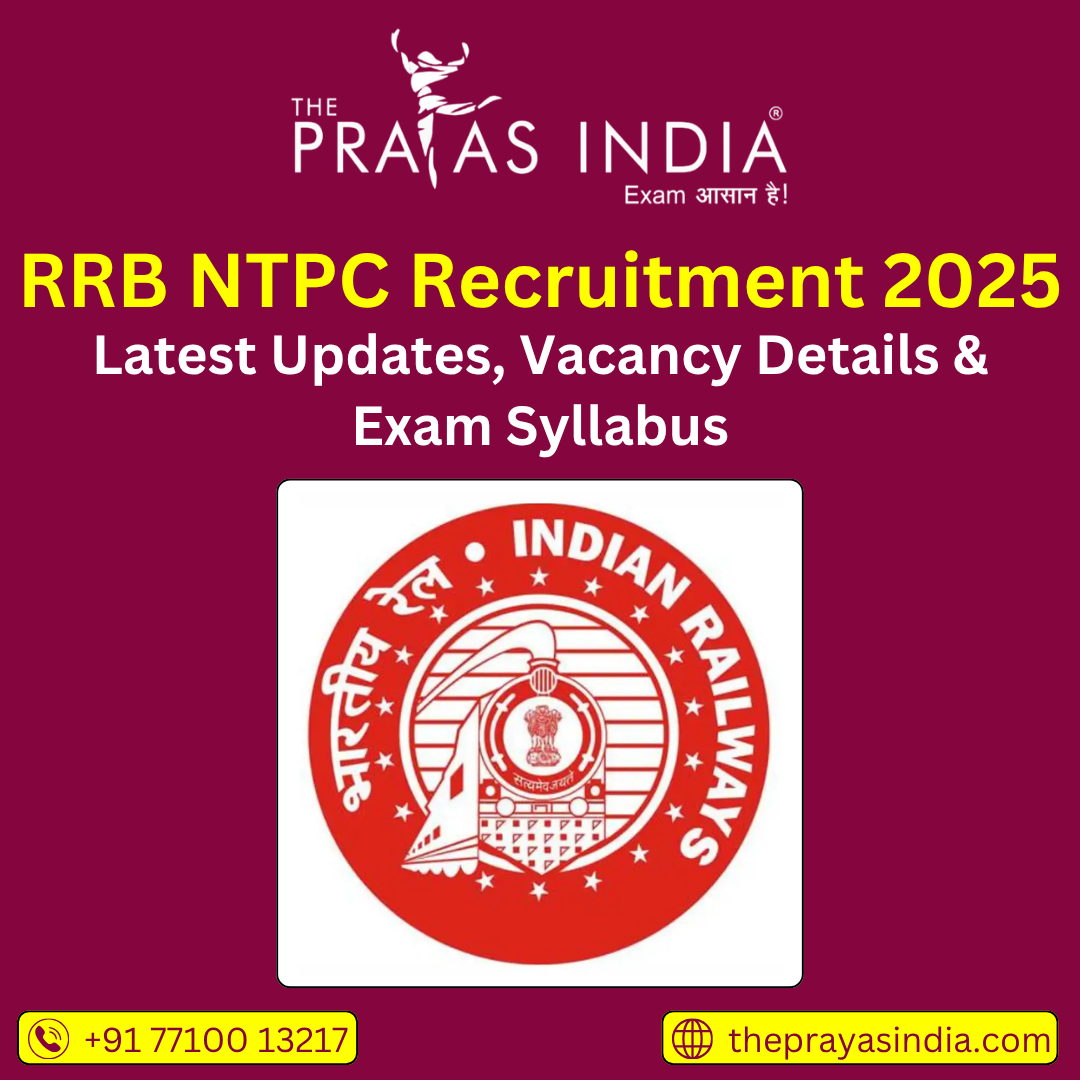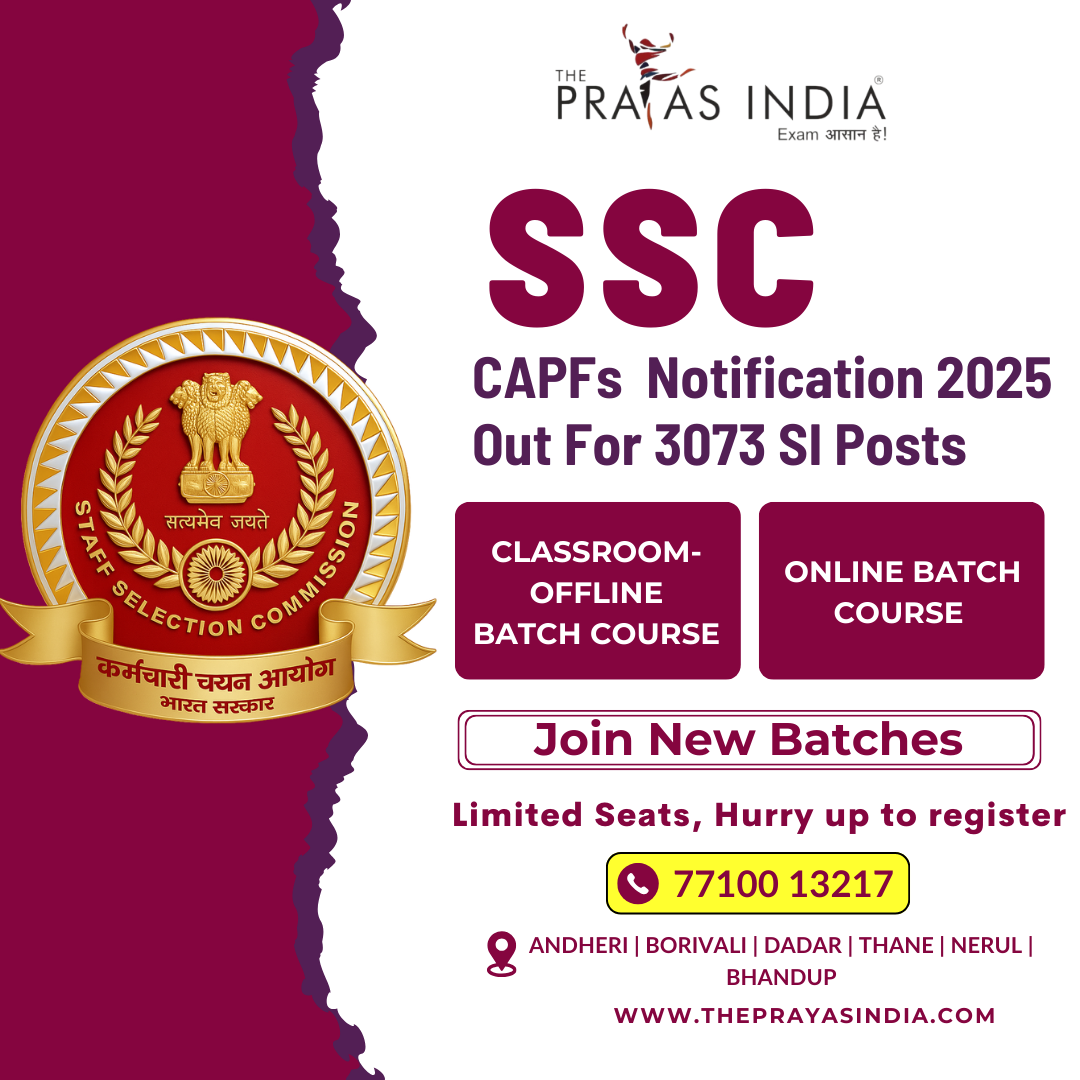RBI Grade B Recruitment 2025: Complete Guide for Aspirants
The Reserve Bank of India (RBI) Grade B Officer exam is one of the most prestigious exams in India, attracting thousands of dedicated aspirants each year. It offers a gateway to an exalted career in one of the most influential financial institutions of the country. Clearing this exam requires a clear strategy, thorough understanding of the exam pattern, syllabus, and focused preparation.
This article provides an in-depth, detailed guide on the RBI Grade B Exam 2025, including phase-wise exam patterns, extensive syllabus coverage with tables, and strategic preparation tips. Whether you are a fresher or a working professional, this comprehensive overview will help you to plan effectively.
Click Here to Apply
RBI Grade B Notification 2025 Highlights
| Particulars | Details |
|---|---|
| Organization | Reserve Bank of India (RBI) |
| Exam Name | RBI Grade B Officer Exam 2025 |
| Posts | Officers in Grade B (Direct Recruitment) – General, DEPR, DSIM |
| Total Vacancies | 120
|
| Notification Release Date | 8th September 2025 |
| Application Dates | 10th to 30th September 2025 |
| Selection Process | Phase I (Prelims) → Phase II (Mains) → Interview |
| Salary | Basic Pay ₹55,200/month; Gross ₹1,22,717/month (excluding HRA) |
| Official Website | www.rbi.org.in |
Important Dates
| Event | Date |
|---|---|
| Online Registration & Fee Payment | 10 Sept 2025 – 30 Sept 2025 (6 PM) |
| Phase I Exam (General) | 18 October 2025 |
| Phase I Exam (DEPR/DSIM) | 19 October 2025 |
| Phase II Exam (General) | 6 December 2025 |
| Phase II Exam (DEPR/DSIM) | 7 December 2025 |
| Interview | To be announced |
Vacancy Details
| Stream | Vacancies |
|---|---|
| Grade B Officers (General) | 83 |
| Grade B Officers (Department of Economic and Policy Research) | 17 |
| Grade B Officers (Department of Statistics and Information Management) | 20 |
| Total | 120 |
Get All Banking Exams Updates
Eligibility Criteria
Nationality:
- Indian citizens, or
- Subjects of Nepal/Bhutan, or
- Tibetan refugees who arrived before 1 January 1962, or
- Persons of Indian origin who migrated with permanent settlement intention.
Age Limit (as on 1 September 2025):
- Minimum: 21 years
- Maximum: 30 years
- Age relaxation applicable for reserved categories as per government norms.
Educational Qualification:
| Stream | Qualification Requirement |
|---|---|
| General | Graduation with 60% marks (50% for SC/ST/PwBD) or Postgraduate with 55% marks |
| DEPR | Master’s degree in Economics/Finance/Allied Subjects with at least 55% marks (50% for SC/ST/PwBD). PhD and research experience preferred. |
| DSIM | Master’s degree in Statistics/Mathematics/Data Science/AI/ML/Big Data + 55% marks (50% for SC/ST/PwBD) OR 4-year Bachelor’s in these fields with 60% marks |
Why RBI Grade B Exam is Highly Sought After?
The RBI regulates India’s monetary policy and banking system, making it a key institution for the country’s economic stability. Working as an RBI Grade B officer not only promises excellent career growth but also gives you the chance to shape India’s financial future. The examination tests candidates on various aspects crucial to monetary economics, banking operations, governance, and analytical abilities.
Click Here to Download Official Notification PDF
Exam Structure & Pattern
RBI Grade B Exam consists of three phases:
- Phase 1 (Preliminary Exam): Objective type questions.
- Phase 2 (Mains Exam): Mix of objective and descriptive questions.
- Interview: Personality test and overall assessment.
The overall selection depends on the combined performance across Phase 2 and the Interview rounds.
Selection Process
Phase I (Preliminary Exam)
- Objective type test (online)
- Subjects: General Awareness, English Language, Quantitative Aptitude, Reasoning
- Duration: 120 minutes
- Marks: 200
- Qualifying in nature (scores considered for shortlisting for Phase II)
Phase II (Mains Exam)
- General Stream: Three papers
- Economic & Social Issues (Objective) – 100 marks
- English (Descriptive) – 100 marks
- Finance & Management (Objective) – 100 marks
- DEPR:
- Paper I: Economics (Objective) – 100 marks
- Paper II: Economics (Descriptive) – 100 marks
- Paper III: Economics (Descriptive) – 100 marks
- DSIM:
- Paper I: Statistics (Objective) – 100 marks
- Paper II: Statistics (Descriptive) – 100 marks
- Paper III: Statistics (Descriptive/Online) – 100 marks
Interview
- Marks: 75
- Assesses communication skills, domain knowledge & suitability for the role
Join New Batches
RBI Grade B Exam Pattern 2025
The RBI Grade B exam is conducted in three main phases: Phase 1 (Prelims), Phase 2 (Mains), and the Interview. The exam pattern varies depending on the stream chosen by the candidate: General (DR), Department of Economic and Policy Research (DEPR), and Department of Statistics and Information Management (DSIM).
1. General Stream (DR) Exam Pattern
Phase 1 (Prelims) – Objective Type
- Total Questions: 200
- Total Marks: 200
- Time Duration: 120 minutes
- Sections: English Language, Quantitative Aptitude, Reasoning Ability, General Awareness
- Negative Marking: 0.25 marks deducted for each incorrect answer
| Sr No | Section | No. of Questions | Marks | Duration |
|---|---|---|---|---|
| 1 | English Language | 30 | 30 | 25 minutes |
| 2 | Quantitative Aptitude | 30 | 30 | 25 minutes |
| 3 | Reasoning Ability | 60 | 60 | 45 minutes |
| 4 | General Awareness | 80 | 80 | 25 minutes |
| Total | 200 | 200 | 120 minutes | |
Phase 2 (Mains) – Mix of Objective and Descriptive
- Total Papers: 3 (Economic & Social Issues, English Language, Finance & Management)
- Total Marks: 300
- Time Duration: 330 minutes
- Negative Marking applies in objective sections only
| Paper No | Subject | Question Type | Marks | Duration |
|---|---|---|---|---|
| 1 | Economic & Social Issues | Objective + Descriptive | 100 | 120 minutes |
| 2 | English Language | Descriptive | 100 | 90 minutes |
| 3 | Finance & Management | Objective + Descriptive | 100 | 120 minutes |
2. DEPR Stream (Department of Economic and Policy Research)
Phase 1 (Prelims) – Objective Type
- Same as General stream
Phase 2 (Mains) – Specialized Subjects
- Paper 1: Economic and Social Issues (Objective + Descriptive)
- Paper 2: English Language (Descriptive)
- Paper 3: Economics (Descriptive + Objective)
| Paper No | Subject | Question Type | Marks | Duration |
|---|---|---|---|---|
| 1 | Economic & Social Issues | Objective + Descriptive | 100 | 120 minutes |
| 2 | English Language | Descriptive | 100 | 90 minutes |
| 3 | Economics | Objective + Descriptive | 100 | 120 minutes |
The Economics paper is usually of the standard equivalent to a Master’s degree level exam in Economics from Indian Central Universities.
3. DSIM Stream (Department of Statistics and Information Management)
Phase 1 (Prelims) – Objective Type
- Same as General stream
Phase 2 (Mains) – Specialized Subjects
- Paper 1: Statistical Methods (Objective)
- Paper 2: Statistics (Descriptive)
- Paper 3: English (Descriptive)
| Paper No | Subject | Question Type | Marks | Duration |
|---|---|---|---|---|
| 1 | Statistical Methods | Objective | 100 | 120 minutes |
| 2 | Statistics | Descriptive | 100 | 90 minutes |
| 3 | English | Descriptive | 100 | 90 minutes |
Interview Round (for All Streams)
- Marks: 75
- Weightage: 20% of final selection
- Candidates are tested on personal background, RBI functions, current affairs, and field knowledge.
- Language choice: Hindi or English.
These three distinct patterns highlight the differences in subject focus, especially in Phase 2, reflecting the specialization of each department.
The Prayas India Mock Test
Detailed RBI Grade B Exam Syllabus 2025
Phase 1 Syllabus Breakdown
| Section | Topics Covered |
|---|---|
| English Language | Reading Comprehension, Cloze Test, Para Jumbles, Grammar, Sentence Correction, Vocabulary |
| Numerical Ability | Number System, Simplification, Ratio & Proportion, Percentage, Profit & Loss, Time & Work, Data Interpretation |
| Reasoning Ability | Puzzles, Seating Arrangement, Coding-Decoding, Syllogisms, Inequalities, Blood Relations, Directions |
| General Awareness | Current Affairs (National & International), Banking Awareness, Government Schemes, Economic News, Awards, Sports |
Phase 2 Syllabus Breakdown
1. Economic & Social Issues (ESI)
- Indian Economy: Growth and Development, National Income, Poverty and Unemployment.
- Social Infrastructure: Health, Education, and Social Justice.
- Economic Reforms & Globalisation, Balance of Payments, WTO.
- Sustainable Development and Environment.
2. English Language (Descriptive)
- Essay Writing on socio-economic, financial, and policy topics.
- Précis writing and comprehension exercises.
3. Finance & Management (FM)
- Financial System: Role and Functions of RBI, Banking and Non-Banking Institutions.
- Financial Markets – Money, Capital, Forex, and Derivatives.
- Monetary and Fiscal Policy, Budget, and Economic Survey.
- Corporate Governance, Risk Management, FinTech, and Digital Payments.
- Basics of Accounting: Balance Sheets, Ratios, Financial Analysis.
- Organizational Behavior and Management, Leadership, Ethics, and Communication.
Study Materials & Preparation Tips
- Keep yourself updated with RBI’s official publications such as the Annual Report, Monetary Policy Report, Financial Stability Report, and Economic Survey.
- Read newspapers daily focusing on economics, banking, and current affairs.
- Practice previous year papers and attempt mock tests regularly to improve speed and accuracy.
- Join online or offline coaching classes for structured guidance if required.
- Improve your descriptive writing skills by practicing essays and précis writing on current socio-economic topics.
Toppers’ Interview Strategies
Many successful RBI Grade B candidates recommend:
- Understanding current affairs deeply, especially related to economy and finance.
- Practising mock interviews focused on RBI’s functions and monetary policy.
- Building confidence and clear communication skills.
- Staying honest and calm during the interview.
Final Selection Criteria
- Total marks considered: Phase 2 exam (300 marks) + Interview (75 marks) = 375 marks.
- The final merit list is prepared based on combined performance and reservation criteria.
- Interview weightage: 20% of the total marks.
Summary Table: RBI Grade B Exam at a Glance
| Phase | Exam Type | Subjects | Marks | Duration | Negative Marking |
|---|---|---|---|---|---|
| 1 | Objective (Prelims) | English, Quantitative Aptitude, Reasoning, General Awareness | 200 | 120 minutes | 0.25 |
| 2 | Objective + Descriptive (Mains) | Economic & Social Issues, English (Descriptive), Finance & Management | 300 | 330 minutes | 0.25 (Objective) |
| 3 | Interview | Personality Test & RBI Knowledge | 75 | – | No |
Application Fee
- General/OBC/EWS: ₹850 + GST
- SC/ST/PwBD: ₹100 + GST
- RBI Staff: Exempted
Salary and Job Profile
- Starting basic pay ₹55,200 with gross salary approx ₹1,22,000 (excluding HRA)
- Includes Grade Allowance, Dearness Allowance, and other facilities
- Challenging role in policy making, financial regulation, supervision, and economic research in RBI
- Opportunities for career growth and national-level impact
Preparation Tips by The Prayas India
- Focus on current affairs with special emphasis on Economic and Banking updates
- Develop speed and accuracy in Quantitative and Reasoning
- Practice English comprehension and writing skills for Phase II descriptive papers
- Thoroughly study Economic and Social Issues with standard reference books
- Take mock tests regularly for all phases to improve time management
- Analyze RBI publications and previous year question papers for exam pattern insights
The RBI Grade B Recruitment 2025 presents an unparalleled career opportunity for aspiring candidates looking to build a prestigious career in the country’s central banking system. With a rigorous selection process, detailed syllabus, and increasing vacancies, preparation must start early and with discipline. The Prayas India is committed to supporting aspirants with expert guidance, study materials, and mock tests tailored for RBI Grade B aspirants to ensure success.
For more information, updates, and quality preparation resources, aspirants are encouraged to stay connected with The Prayas India.









